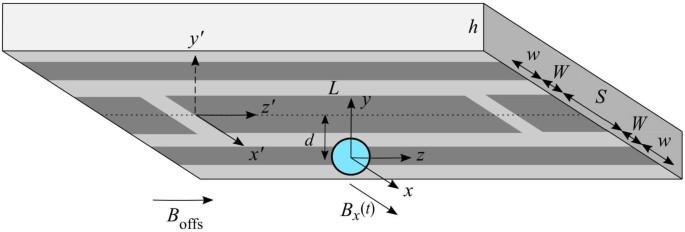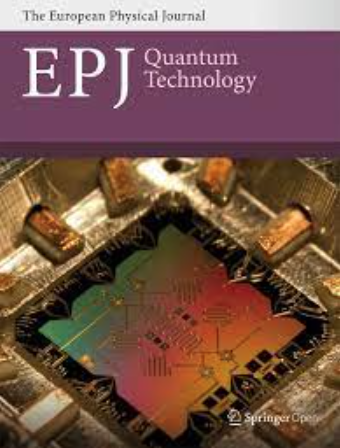用玻色-爱因斯坦凝聚体感应微波光子
IF 5.8
2区 物理与天体物理
Q1 OPTICS
引用次数: 0
摘要
我们考虑铷原子的磁捕获玻色-爱因斯坦凝聚体与共面波导谐振器维持的固定微波辐射场的相互作用。这种耦合允许通过计算由于超精细跃迁到非捕获态而从凝聚体中脱落的原子来测量谐振器的磁场。我们确定了这种检测方案的量子效率,并证明了在单光子水平上可以检测到弱微波场。本文章由计算机程序翻译,如有差异,请以英文原文为准。

Sensing microwave photons with a Bose–Einstein condensate
We consider the interaction of a magnetically trapped Bose–Einstein condensate of Rubidium atoms with the stationary microwave radiation field sustained by a coplanar waveguide resonator. This coupling allows for the measurement of the magnetic field of the resonator by means of counting the atoms that fall out of the condensate due to hyperfine transitions to non-trapped states. We determine the quantum efficiency of this detection scheme and show that weak microwave fields at the single-photon level can be sensed.
求助全文
通过发布文献求助,成功后即可免费获取论文全文。
去求助
来源期刊

EPJ Quantum Technology
Physics and Astronomy-Atomic and Molecular Physics, and Optics
CiteScore
7.70
自引率
7.50%
发文量
28
审稿时长
71 days
期刊介绍:
Driven by advances in technology and experimental capability, the last decade has seen the emergence of quantum technology: a new praxis for controlling the quantum world. It is now possible to engineer complex, multi-component systems that merge the once distinct fields of quantum optics and condensed matter physics.
EPJ Quantum Technology covers theoretical and experimental advances in subjects including but not limited to the following:
Quantum measurement, metrology and lithography
Quantum complex systems, networks and cellular automata
Quantum electromechanical systems
Quantum optomechanical systems
Quantum machines, engineering and nanorobotics
Quantum control theory
Quantum information, communication and computation
Quantum thermodynamics
Quantum metamaterials
The effect of Casimir forces on micro- and nano-electromechanical systems
Quantum biology
Quantum sensing
Hybrid quantum systems
Quantum simulations.
 求助内容:
求助内容: 应助结果提醒方式:
应助结果提醒方式:


